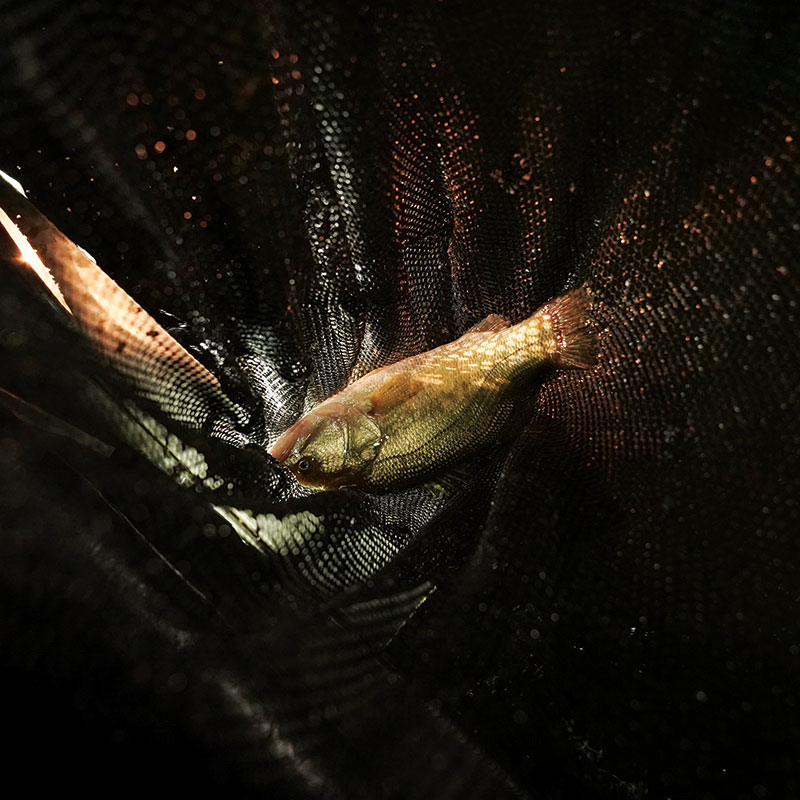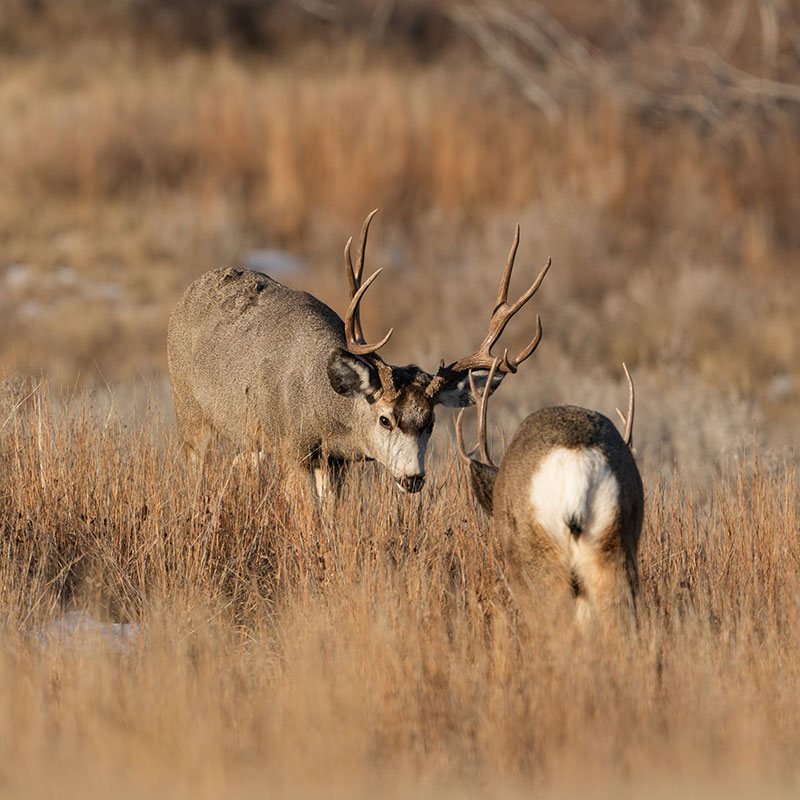The Sound a Mirror Makes
Ashley Peterson
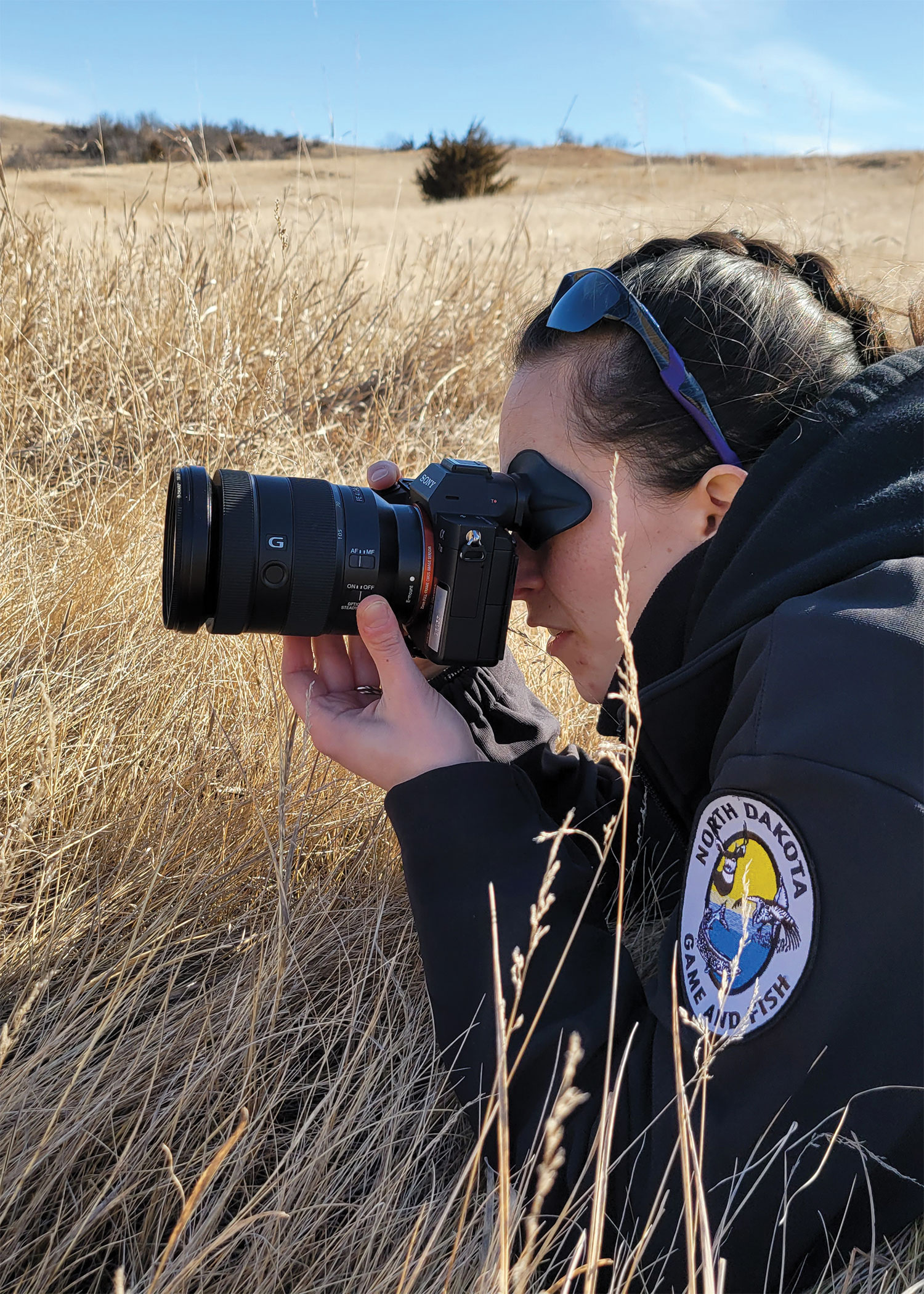
It’s mid-May and we’re somewhere in McLean County. Ron Wilson and I are playing spectators from the vehicle as researchers set nets with intentions of catching a Western meadowlark. I have my camera resting on my trusty steady bag, documenting from afar.
Amidst our casual conversation, Ron asked: “So, are you going to take a picture or what?” I smile, nearly chuckle out loud, before assuring him that not only did I have photos, but some video as well. “How can that be?” he said. “I didn’t hear your camera click.”
When a digital single lens reflex was the camera of choice at the time, I had my fair share of moments wondering how many photos I could get before the camera action would spook my critter subject. Some animals are more tolerant to the incessant clicking, affording me several minutes before bolting. Others would flee after just a single disruptive frame.
Some DSLRs offered a “quiet mode,” but I hardly found it quiet at all and the feature seemingly forced the shutter to operate slower.
Which was certainly not ideal, especially for rapid-fire burst shooting. Enter the mirrorless camera world where, as you may have guessed it, the mirror is no more, rendering the shutter truly silent, not just quiet. That’s a gamechanger, especially for wildlife photography.
Like the time I was sitting in a blind on a sharp-tailed grouse lek, in the company of Jesse Kolar, Game and Fish Department upland game supervisor. In between birds dancing near and far, he clicked away on his own camera before pausing to whisper in my direction: “Are you shooting video?” To which I gently nod.
“Oh,” he said, “I wondered why I didn’t hear your camera, but if you’re shooting video, that makes sense.” I quickly whispered back, “No, I have photos, too … see?” as I swiveled my camera’s screen to reflect the evidence. A quizzical expression took over Jesse’s face as he voiced some concern for his hearing. I suppressed a laugh before confirming his hearing was fine because my camera didn’t make noise.
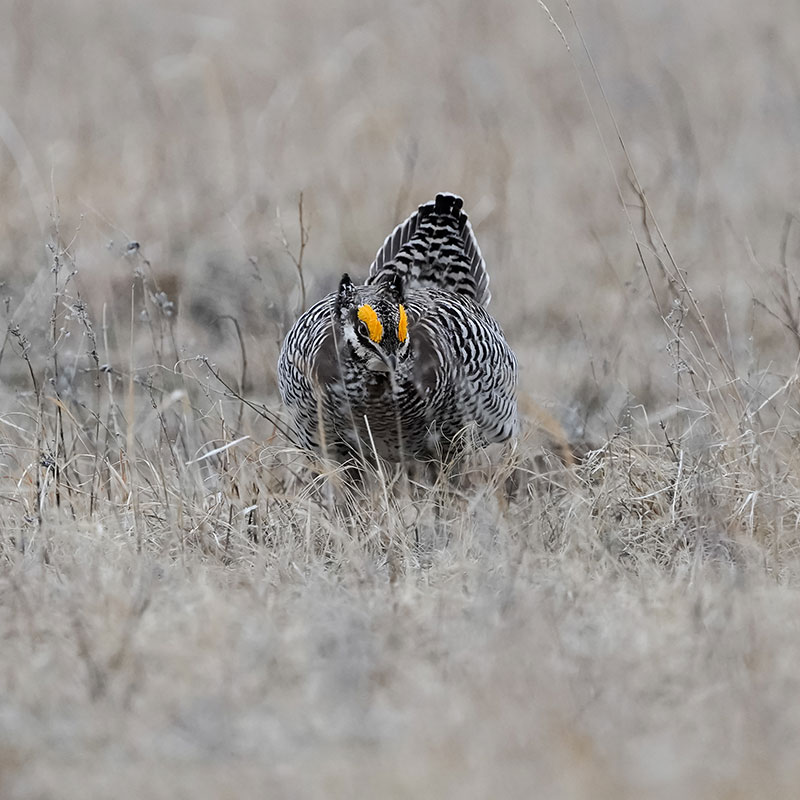
The camera’s intelligent eye detection auto focus system tracked this sharp-tailed grouse/prairie chicken hybrid through the grass until it was close enough to capture this image.
The mirrorless camera’s “silent shutter” sparked a conversation for later, and perhaps inspired some research on my colleague’s part. While the clicking from Jesse’s camera didn’t seem to bother the birds, the ability to sit amongst them without making extra, unnecessary noise is a benefit in and of itself. The less I disturb a wild animal while I’m a guest in its home, the better for that animal, and the more natural looking the images.
For the meadowlark study, I knew we needed a photo of the bird returning to the wild.
At a minimum, a bird in hand, just at or right after the moment of release: wings unfurling, legs stretching out, transmitter antenna floating.
Thankfully, due to the camera’s high burst rate, excellent auto focus and subject tracking, I successfully captured that exact scene … and nearly a dozen more until the meadowlark left the frame.
The final images provided many options for the story layout and afforded me the ability to composite the sequence together into one cool frame. I couldn’t think of a better way to illustrate the meadowlark’s return to his world.
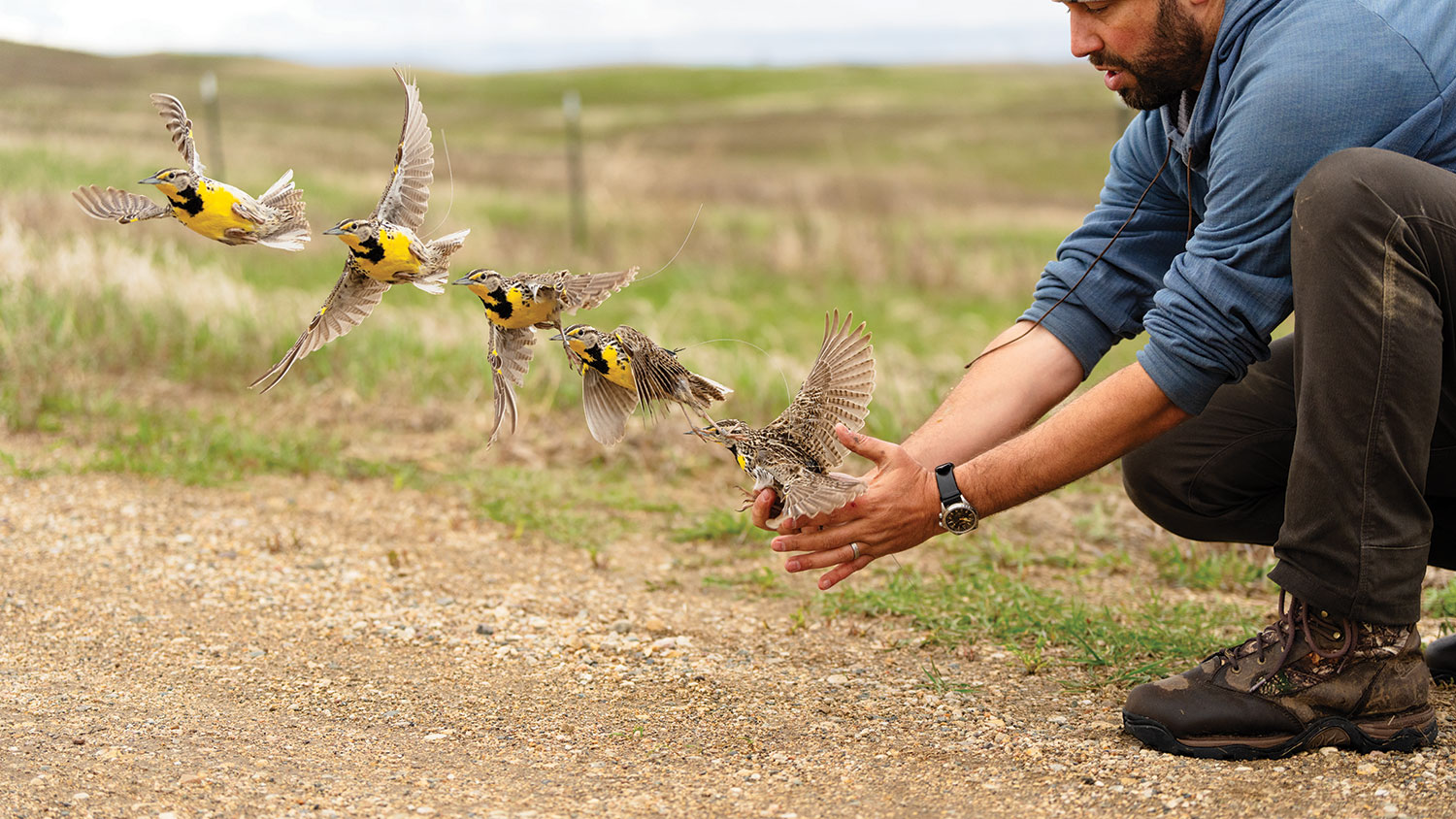
Despite the incredible advancements in digital photography in even the past decade, it’s easy to forget these little black boxes take more effort than simply pointing and shooting.
I humbly admit I needed hands on a camera weekly for the better part of a year to truly feel confident operating this gear.
Even with that, my initial success rate was below 10%.
After a few years of learning and growing with this camera, I’m happier with my average 25% keeper rate. Some days it’s more, while others it’s significantly less.
The takeaway of my experience is that no matter how advanced the camera is, you still need to learn how to operate it, practice often and be willing to step out of your comfort zone.

